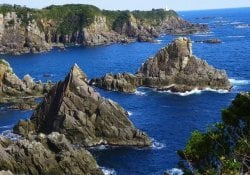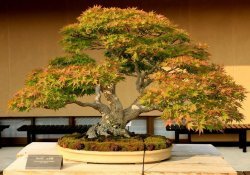Wakame [若布] is a species of edible seaweed widely consumed in Japan and Asia. In this article, we are going to talk all about this algae and how it is consumed, which dishes it is usually in and what its health benefits are.
Índice de Conteúdo
What is Wakame Algae?
Wakame [ワカメ] usually written in katakana has its scientific name of Undaria pinnatifida. It is a green or brown seaweed in the family Chigaisoidae which can be found also written with [若布], [和布] and [稚海藻].
Seaweed generally grows south of Hokkaido on the Sea of Japan side, on the southwestern Pacific coast from Hokkaido to Kyushu, and on both shores in the southern part of the Korean Peninsula, near the low tide line.
In the United States it is often called sea mustard. It adheres to rocks and can reach a length of up to 2 meters. Seaweed is easy to dry and light to transport, hence its high consumption for millennia.
It is usually sold salted and dried packaged, but it can be found fresh and raw during its seasons. O wakame commercially available is green, but its actual color is brown, and it turns green after drying and boiling.
The Korean Peninsula eats more wakame than Japan, and the average annual consumption of kelp per Korean citizen is said to be three times that of Japan.
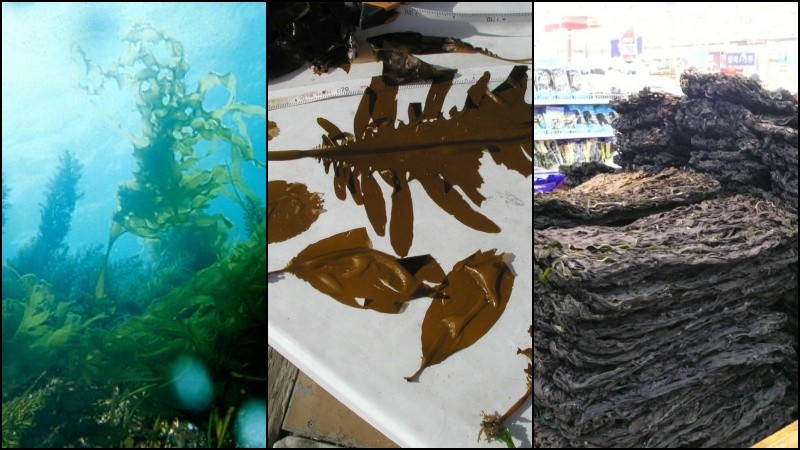
How to consume Wakame?
Wakame is versatile, delicious and easy to add to your kitchen. It can be used in a wide variety of recipes. It is usually sold dried and packaged to be added to salads and Japanese dishes such as missoshiro and ramen.
When using, soak in water, remove salt or rehydrate. They are usually boiled or dried and then chopped. Wakame is often used as an ingredient in soups, vinegary foods, salads, fried and baked foods.
A seaweed It has a sweeter flavor when consumed alone. Many may be wondering if this is the same nori seaweed used in sushi? Although the seaweed pressing technique can be used with different algae, generally nori it is made from red algae.
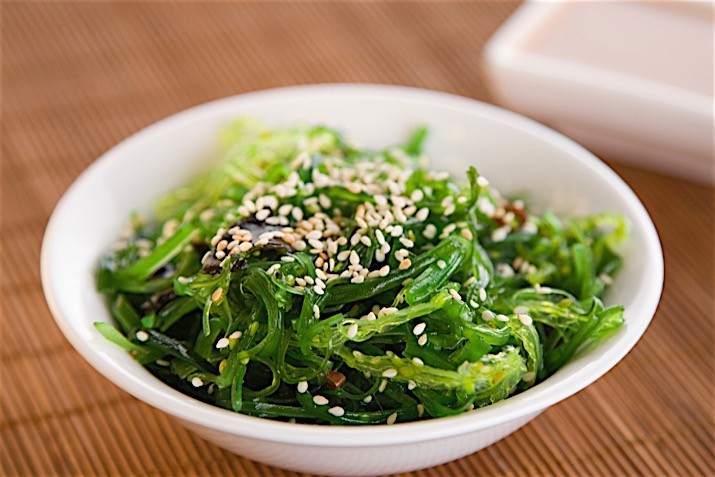
The history of Wakame
Remains of seaweed, including wakame, were found in remains from the Jomon period, so their consumption dates back thousands of years. In the past, edible algae were often called “me”.
According to the Enki-shiki (927), many seaweeds, including wakame, were dedicated to deities and, according to the Shokurain Papers, were also used as salary.
One of the oldest appearances of the word wakame it's in the "Manyoshu” a compilation of poems from 759. The seaweed was used as food, an ingredient for vinegar and soup, and also for prayer rituals for a good harvest.
Japan's marine farmers have been cultivating this algae since the Nara period. Wakame was the ancient expression used to refer to different types of seaweed. With time, seaweed began to be distinguished, appearing kajime, kombu, arame and others.
The first appearance in Western documents is in Nippo Jisho (1603) and is called Vacame. It was not until the 1960s that seaweed was widely used in the United States and other Western countries, mainly in sushi bars.
Japanese and Korean seafarers have cultivated wakame for centuries and are still major producers and consumers. Japanese kelp has also been cultivated in France since 1983.
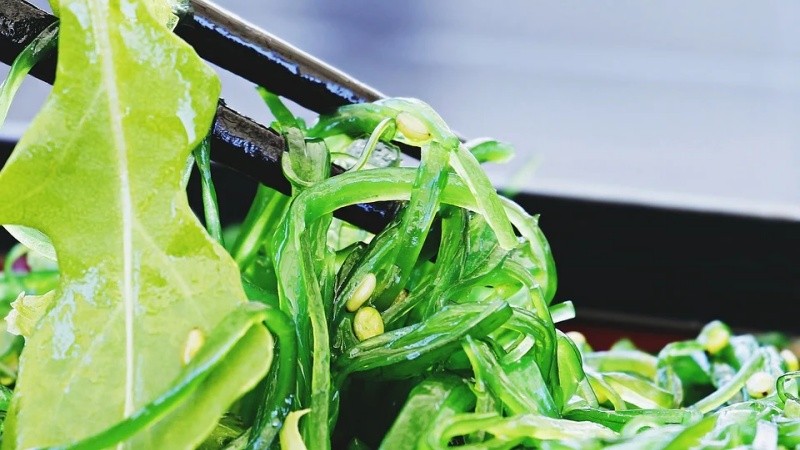
The article is still halfway through, but we recommend also reading:
Wakame health benefits
Wakame is low in calories and high in nutrients. Small amounts are enough to help with the intake of minerals like iodine, magnesium, folate, calcium and manganese. It also contains vitamins A, C, E and K, iron, copper and phosphorus.
The high content of iodine can help the thyroid by preventing diseases like hypothyroidism. Wakame also reduces risk of high blood pressure and other heart diseases. It also helps in heart health and lowers blood cholesterol levels.
The seaweed also has cancer-fighting properties, studies reveal that it is able to block the growth of cancer cells and inhibit the growth of colon and kidney cancer cells. Others claim that the seaweed helps with hair care.
Wakame also lowers blood sugar and improves insulin resistance. Not to mention that its low calories also help you lose weight. Japanese seaweed has anti-obesity effects capable of reducing adipose tissue and waist circumference.
Wakame also avoids premature aging, as it is rich in antioxidants, vitamins and beta-carotene. Because it is rich in choline, it also helps in brain health, which is why japanese are smart?
Summarizing the benefits of Japanese kelp:
- Low calories;
- Rich in nutrients;
- Rich in vitamins;
- Rich in minerals;
- Avoid thyroid;
- Lowers cholesterol;
- Reduces blood sugar.
- Reduce the weight;
- Reduces cancer cells;
- Contributes to brain health;
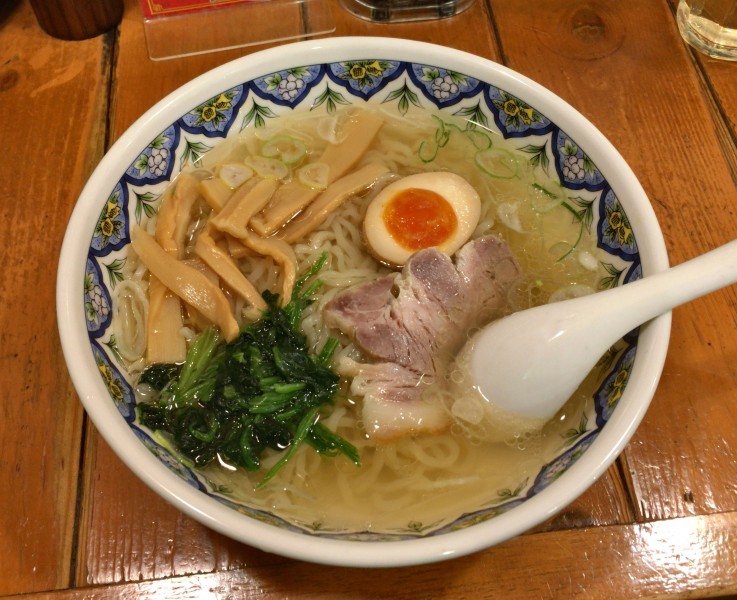
The Dangers of Eating Wakame
Despite the benefits, there are also dangers of consuming any type of food in excess. The fact of wakame being rich in iodine requires you to be cautious when consuming, not exceeding 20 grams per day.
To lower the iodine wakame you can eat it along with broccoli, cabbage and soybeans which usually absorb iodine. Consuming in excessive amounts can have the reverse effect on the thyroid and even cause symptoms such as fever, stomach pain, nausea and diarrhea.
Dehydrated Wakame can be high in sodium, so if you have pressure problem consume with care. Some may contain heavy metals, but they are low amounts with no need to worry.
In fact, you don't have to worry so much when eating Wakame, some are not used to hearing this, but it's the same alerts as any food. We do not want to discourage its consumption in any way. It's like reading the drug leaflet and seeing the rare side effects.
Where to buy Wakame?
If you want to buy Japanese seaweed, let's leave some sites that sell below:
Wakame nutritional information
Below we have a table with nutritional information for 100 grams of wakame crude:
Responsive Table: Scroll the table sideways with your finger >>
| Energy | 188 kj (45 kcal) |
| Carbohydrate | 9.14 g |
| Sugar | 0.65 g |
| Dietary fiber | 0.5 g |
| Fat | 0.64 g |
| Saturated Fatty Acids | 0.13 g |
| Monovalent Unsaturated | 0.058 g |
| Multivalent Unsaturated | 0.218 g |
| Protein | 3.03 g |
| tryptophan | 0.035 g |
| threonin | 0.165 g |
| isoleucine | 0.087 g |
| Leusin | 0.257 g |
| Ricin | 0.112 g |
| methionine | 0.063 g |
| cistine | 0.028 g |
| phenylalanine | 0.112 g |
| Tyrosine | 0.049 g |
| Barin | 0.209 g |
| arginine | 0.092 g |
| histjin | 0.015 g |
| Alanine | 0.136 g |
| Asparaginic Acid | 0.179 g |
| Glutamic Acid | 0.199 g |
| glycine | 0.112 g |
| Proline | 0.092 g |
| Cool | 0.078 g |
| Vitamin A Equivalent | 2% |
| beta carotene | (2%) 216 mcg |
| With Lutein | 2% |
| zeaxanthin | 2% |
| Thiamine (B1) | (5%) 0.06 mg |
| Riboflavin (B2) | (19%) 0.23 mg |
| Niacin (B3) | (11%) 1.6 mg |
| Pantothenic Acid (B5) | (14%) 0.697 mg |
| Vitamin B6 | (0%) 0.002 mg |
| Folic Acid (B9) | (49%) 196 µg |
| Hill | (3%) 13.9 mg |
| Vitamin C | (4%) 3 mg |
| Vitamin D | (0%) 0 IU |
| Vitamin E | (7%) 1 mg |
| vitamin K | (5%) 5.3 µg |
| Sodium | (58%) 872 mg |
| Potassium | (1%) 50 mg |
| Calcium | (15%) 150 mg |
| Magnesium | (30%) 107 mg |
| Phosphor | (11%) 80 mg |
| Iron | (17%) 2.18 mg |
| Zinc | (4%) 0.38 mg |
| Copper | (14%) 0.284 mg |
| Manganese | (67%) 1.4 mg |
| Selenium | (1%) 0.7 µg |
Wakame Seaweed Videos
To finish the article, we will leave some videos talking a little more about this algae, its benefits and recipes:
Recipe - Wakame Seaweed Salad
Seaweed Salad Ingredients
- 1/2 cup of dehydrated Wakame seaweed in strips;
- 1 grated carrot;
- 3 tablespoons (soup) of sesame seeds;
- 3 tablespoons (soup) of sesame oil;
- 1 tablespoon of soy sauce;
- 1 grated garlic clove;
- salt to taste;
Preparing the Seaweed Salad
Soak seaweed in 1 cup of water for 15 minutes. Drain the water. Toast the sesame seeds in a pan. When the seeds start to jump, let them cool down. In a skillet, lightly toast grated garlic; add the sesame oil, mix for a few seconds, turn off the heat, and let cool down. Mix all the ingredients and serve.
Here's a tip for you to make a delicious one too. Misoshiro with Wakame. I hope you enjoyed the article, if you did, don't forget to share it with your friends and leave your comments. Thanks!

